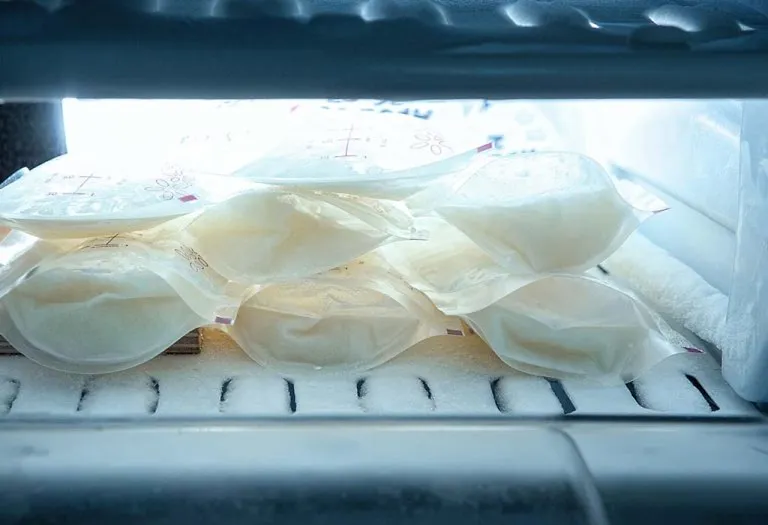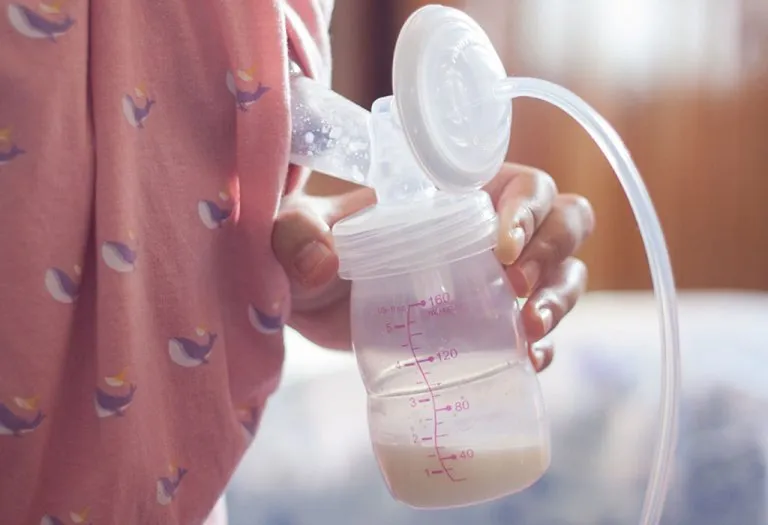Foremilk vs Hindmilk – A Guide for Nursing Mothers

- What Are Foremilk and Hindmilk?
- Foremilk vs. Hindmilk: Which Is Nutritious?
- What Is Foremilk-Hindmilk Imbalance?
- Tips for Helping Your Baby Drink Both Foremilk and Hindmilk
- FAQs
Breast milk is generally known to have two components – foremilk and hindmilk. Foremilk is the milk that comes at the start of breastfeeding, while hindmilk is the milk that comes at the end. Let’s understand more about it. The difference between foremilk and hindmilk lies in their composition and nutritional value. Foremilk is thinner, more watery, and contains higher amounts of lactose, which helps hydrate the baby. On the other hand, hindmilk is richer, creamier, and contains higher levels of fat, which is essential for the baby’s growth and weight gain. Understanding the distinction between foremilk vs hindmilk is important for ensuring that the baby receives a balanced diet during breastfeeding.
What Are Foremilk and Hindmilk?
If you are thinking about foremilk vs. hindmilk, the major difference is the fat content of the milk. The breasts only produce one type of milk, which has high fat content. The different types of milk are the result of the mechanics of milk release. The fat content of the milk gradually increases as the breastfeeding session progresses. When the milk is being produced in the breast, the fat globules present in the breast milk stick to each other and to the alveoli walls (where the milk is made). Milk gets collected in the breasts, and slowly moves out through the nipple, leaving behind more and more of the fat content in between the breastfeeding sessions.
Let’s now look at the definitions of foremilk and hindmilk (1).
What Is Foremilk?
The breast milk that the baby receives at the start of a breastfeeding session is known as the foremilk, which has more water content, is higher in volume, but has low fat content.
What Is Hindmilk?
As the breastfeeding goes on, the fatty content of the breast milk increases gradually, and the volume goes down. The breast milk towards the end of the breastfeeding session is lower in volume, but very high in fat content, and is known as the hindmilk.
Foremilk vs. Hindmilk: Which Is Nutritious?
Both foremilk and hindmilk play crucial roles in your baby’s nutrition. The milk your body produces is uniquely designed to provide your little one with precisely what they require. From a nutritional standpoint, all breast milk is beneficial (2). Foremilk is higher in lactose, while hindmilk is richer in fat (and therefore calories) as well as vitamins A and E. Due to this, some neonatal intensive care units (NICUs) initially feed newborns only hindmilk, gradually introducing a combination of foremilk and hindmilk as they grow.
However, for the majority of babies, your body naturally delivers the perfect balance of nutrients.
What Is Foremilk-Hindmilk Imbalance?
If your breasts have more milk than your baby can comfortably consume, your supply will gradually go down over time to correlate to your baby’s actual breast milk needs. Some babies might get an overdose of foremilk, which is rich in lactose. This is known as a foremilk-hindmilk imbalance (3). Infants might also get foremilk-hindmilk imbalance if you have a healthy milk supply, but you take your baby away from the breast before he has finished feeding, or you switch sides too soon.
If you want to ensure that your baby has received hindmilk, it is important to let him decide the duration and frequency of nursing.
Confusion About the Green Nappies
Healthcare providers typically believe in the idea of sticking to one single breast for one feeding session (known as block-feeding), so that the baby can get more hindmilk. These healthcare providers (and mothers of this opinion) might observe the babies passing green stools. However, the common scant green nappy of your child not gaining weight is not the same as the abundant frothy green nappy of a child with an overload of lactose (4). Sticking to one breast may not be the solution for a baby suffering from green “starvation stools”. Check with your International Board Certified Lactation Consultant for your doubts, if you are unsure about what your child’s nappies mean, or whether block-feeding is a good thing for your child.
Temporary Lactose Intolerance
In these circumstances, the child might find it problematic to digest the copious amounts of lactose that is plentiful in the foremilk, causing lactose overload or temporary lactose intolerance. They might get uncomfortable and fussy, and have green, foamy, and frothy nappies. The sheer volume and high sugar content of milk generally mean that infants gain weight quite well with foremilk-hindmilk imbalance. However, it may be possible that some babies might not gain enough weight in this circumstance. It is advised to breastfeed your baby on one breast per feed or for a period of time, because this can be very beneficial with foremilk-hindmilk imbalance to make sure that babies intake a fine proportion of milk with higher fat concentration.
Tips for Helping Your Baby Drink Both Foremilk and Hindmilk
Breastfeeding ensures your baby receives the perfect balance of nutrients, but understanding how to help them consume both foremilk and hindmilk is key. Here are some practical tips to ensure your little one benefits from both components of your milk (5):
- Let your baby feed on one breast until they naturally stop or seem satisfied. This ensures they consume both the thinner foremilk at the beginning and the richer hindmilk at the end.
- Switching breasts too soon can limit your baby’s intake of hindmilk. Offer one breast per feeding session, or if they need more, finish the first breast before switching.
- Pay attention to your baby’s feeding habits. If they seem fussy or unsatisfied, they might not be getting enough hindmilk. Adjust feeding times accordingly.
- If your breasts are very full, consider expressing a small amount of foremilk before feeding. This can help your baby access the fattier hindmilk more quickly.
FAQs
1. Can pumping affect the balance of foremilk and hindmilk?
Pumping can sometimes lead to an uneven distribution of foremilk and hindmilk, especially if sessions are short. To ensure a balanced mix, try to pump for a longer duration or use a breast massage technique to encourage the release of hindmilk. Storing pumped milk in batches can also help maintain a consistent balance.
2. Is hindmilk more important for premature babies?
Hindmilk is particularly beneficial for premature babies due to its higher fat and calorie content, which supports rapid growth and development. Some NICUs (Neonatal Intensive Care Units) even prioritize feeding preemies hindmilk initially to help them gain weight and strength before introducing a mix of foremilk and hindmilk.
3. Can a mother’s diet influence the composition of foremilk and hindmilk?
While a mother’s diet doesn’t directly change the foremilk and hindmilk distinction, it can impact the overall fat content and quality of breast milk. A balanced diet rich in healthy fats, vitamins, and minerals can enhance the nutritional value of both foremilk and hindmilk, benefiting your baby’s growth and development.
It doesn’t matter whether it is hindmilk or foremilk; all your baby needs is lots of milk to grow healthily. It is the quantity of breast milk that determines the baby’s health, rather than the fat content in a particular feed. So, don’t worry too much about the quantity of hindmilk that your baby is receiving.
References/Resources:
1. La Leche League International – Foremilk and Hindmilk
2. San Diego Breastfeeding Center – Foremilk vs. Hindmilk: The Unnecessary Controversy
3. The BMJ – Managing common breastfeeding problems in the community
4. La Leche League GB – Fat Content of Breastmilk – FAQs
5. Children’s Hospital of Philadelphia – Breastfeeding Tips for Beginners
Also Read:
Breast Milk Production Process
Content and Composition of Breast Milk
Foods That Increase Production of Breast Milk
How to Increase the Fat and Nutrients in Your Breast Milk
Was This Article Helpful?
Parenting is a huge responsibility, for you as a caregiver, but also for us as a parenting content platform. We understand that and take our responsibility of creating credible content seriously. FirstCry Parenting articles are written and published only after extensive research using factually sound references to deliver quality content that is accurate, validated by experts, and completely reliable. To understand how we go about creating content that is credible, read our editorial policy here.
























